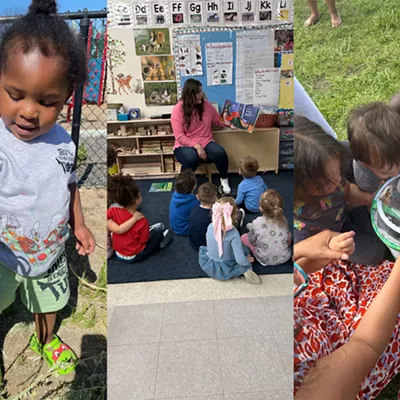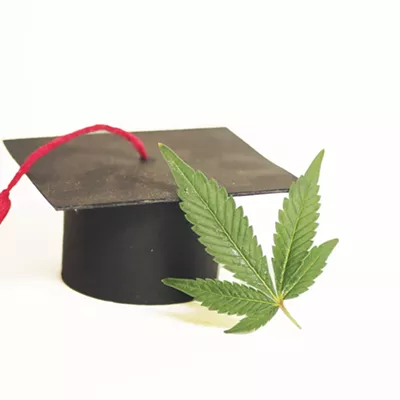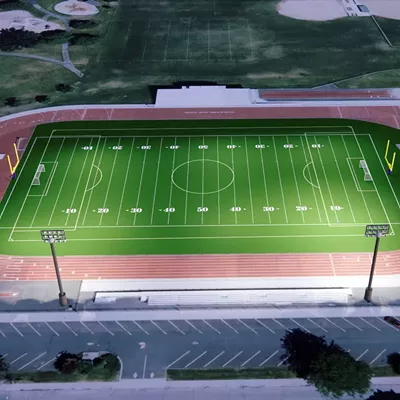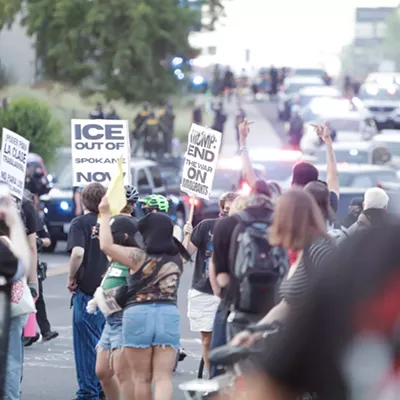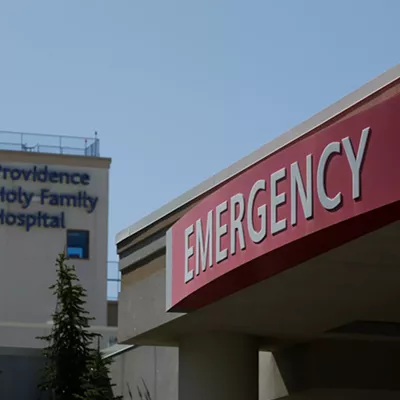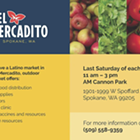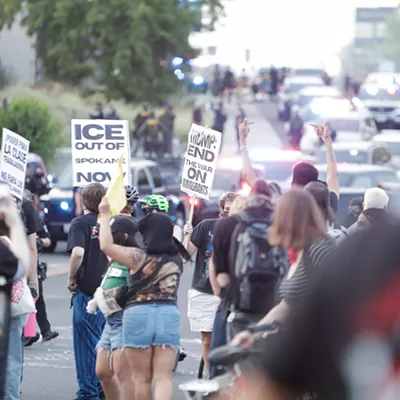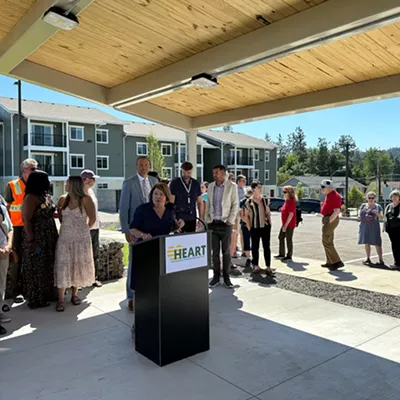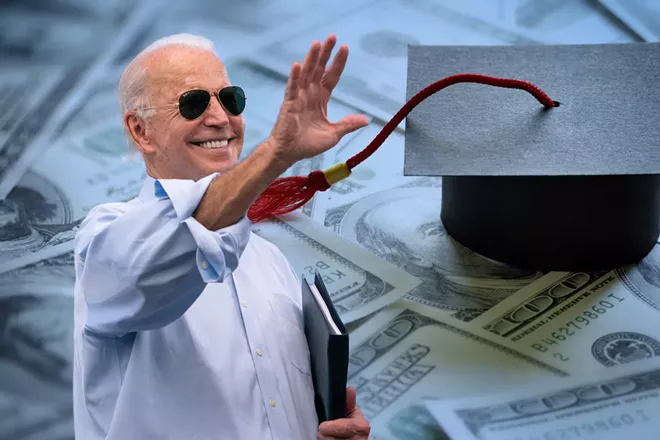
While many celebrated the news last week that President Joe Biden and the U.S. Department of Education plan to forgive $10,000 in federal student loans for those who make less than $125,000 per year, not everyone was pleased with the announcement.
Biden's plan, which could affect 43 million borrowers, also would forgive up to $20,000 in loans for students who received undergraduate Pell Grants, which are typically available to low-income families. The Department of Education estimates 90 percent of those who are eligible make less than $75,000 per year.
In addition to announcing loan forgiveness, Biden extended the pause on interest and federal loan repayments until the end of the year. The plan also proposes changing the structure of income-driven repayment plans so that borrowers pay no more than 5 percent of their discretionary income per month on undergraduate loans. Original loans of less than $12,000 would be forgiven after people make 10 years of payments, even if those payments are $0 per month because their income is so low. Unpaid interest also would not grow while monthly payments are being made.
Biden pointed to last year's deficit reduction of $350 billion, this year's expected deficit reduction of $1.7 trillion, and other savings that could come from the Inflation Reduction Act as more than enough to pay for the plan.
"There is plenty of deficit reduction to pay for the programs," Biden said while announcing the plan on Aug. 24. "Some think it's too much. ... Some think it's too little. But I believe my plan is responsible and fair."
Soon after the announcement, debates broke out across the political spectrum. Some argued $10,000 wasn't enough for borrowers facing huge debts. Others argued that the entire loan system should be restructured to eliminate interest or that colleges should be free to attend. Still others argued that the government shouldn't give "handouts" to borrowers. Some who criticized the idea of student loan forgiveness found themselves inundated with replies asking why they were OK with their business' Paycheck Protection Program (PPP) loan being forgiven during the pandemic, typically in amounts far greater than $10,000.
Some lamented the $240 billion-plus price tag the plan could have over the next decade. But Biden's decision and the resulting debate is happening as state and federal funding for colleges and universities has significantly decreased in recent decades, driving up tuition and fees. In 2002, the cost of in-state tuition and fees at Washington State University was $4,520 (not adjusted for inflation). This year's in-state tuition and fees at WSU come to $12,700, with an overall estimated cost of $26,976 when room, board and books are factored in.
Even if an in-state WSU student managed to save half the estimated cost on books and food, living off just $8 per day for meals, they would need to work 33 hours per week at Washington's minimum wage throughout the year. That does not account for taxes or any other expenses such as gas, bus fare, entertainment, medical emergencies or other living costs. An out-of-state student would need to work 54 hours per week (not accounting for overtime) at Washington's minimum wage to afford school. If an out-of-state student works in neighboring Moscow, Idaho, where minimum wage is $7.25, they'd have to work 108 hours per week (not accounting for overtime) to foot the bill. Plus, tuition and fees are due at the start of the semester in a lump sum.
On social media, some Inlander readers upset with the plan asked whether they'd be reimbursed for loans they already paid back, while others said they made sacrifices to pay out of pocket.
Still, other readers shared how positive forgiveness would be for their lives, with some expecting much of their remaining balance to be forgiven, while others said the move would at least offer some relief.
The plan relies on 9/11-era federal powers granted to the U.S. education secretary in times of emergencies (the pandemic is the cited emergency), and it remains to be seen if legal challenges could delay the forgiveness. Here are answers to other common questions:
How much will be forgiven? For federal student loan borrowers who make less than $125,000 per year or $250,000 per household, up to $10,000 per borrower will be forgiven. Those who qualified for and took Pell Grants during their undergraduate education will get up to $20,000 forgiven.
How do I make sure I am on the list? Many borrowers may already have their income information on file with their loan servicers if they are on an income-based repayment plan. Current students should have their relevant income information (often parents' income if the student is claimed as a dependent) on file if they've filled out the FAFSA.
The Department of Education also plans to open an application process as early as September for those who need to verify their eligibility, according to the National Association of Student Financial Aid Administrators.
Do current students qualify? Do loans for this upcoming school year count? Current students qualify. The forgiveness plan says borrowers can receive up to $10,000 (or up to $20,000 for Pell recipients) for loans that were disbursed on or before June 30, 2022. If the amount of loans received by that date was less than $10,000, that lower amount will be forgiven.
Do Parent PLUS loans qualify? Yes. While Parent PLUS loans are meant to supplement the amount an individual student is allowed to borrow so they can cover the full cost of school, the plan specifies that forgiveness will apply per borrower, not per student.
However, it's still unclear if forgiveness will apply to a parent's own student loans if they haven't paid them off yet, versus to a Parent PLUS loan they may also have taken out, says Joy Scourey, assistant vice president of student financial services at Washington State University.
Do Perkins loans qualify? Do other types of loans? No, Perkins loans do not qualify, Scourey says. However, those who took out Federal Family Education Loans should be able to consolidate those into federal loans that would qualify, she says. Private student loans do not qualify under the plan.
Should I take out loans now if I haven't before? Loans disbursed after June 30, 2022, won't qualify for the one-time forgiveness plan.
How do I know if I got a Pell Grant? Universities typically don't keep this information on file for very long. Instead, borrowers are encouraged to check their history at studentaid.gov. The site has been running slowly in recent days due to extremely high traffic.
What if I qualified for a Pell Grant but did not take out any loans until grad school? It's not clear yet if students who were eligible for Pell Grants in undergrad can receive forgiveness on loans they took for graduate school, Scourey says.
Will I need to claim the forgiveness as income on my taxes? No, the funds are not taxable.
When will we know more about how the plan will roll out? You can sign up for updates at ed.gov/subscriptions.
When will forgiveness be applied to accounts? The Department of Education has not yet announced when forgiveness will be reflected in accounts. Borrowers will need to make monthly payments again starting in January. Should the plan be challenged in court, there could be a delay in forgiveness payments. ♦



